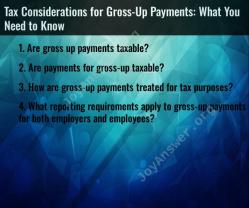How do you figure a car payment?
Calculating your car payment involves several factors, including the price of the car, the interest rate on your auto loan, the length of the loan (loan term), and any down payment or trade-in value you might have. Here's a step-by-step guide to help you figure out your car payment:
Determine the Car Price:
- Decide on the make and model of the car you want to buy and research its price. Consider whether you'll be buying a new or used vehicle.
Calculate Down Payment:
- Determine how much money you can put down as a down payment. A larger down payment will reduce the loan amount and, consequently, the monthly payments.
Account for Trade-In Value:
- If you're trading in your current vehicle, determine its trade-in value. This value can be subtracted from the purchase price of the new car, reducing the loan amount.
Check Interest Rates:
- Research current interest rates for auto loans from various lenders, such as banks, credit unions, or online lenders. The interest rate you qualify for depends on your credit score and the lender's terms.
Choose a Loan Term:
- Decide on the length of the loan. Auto loans typically have terms of 36, 48, 60, or 72 months, but some lenders offer shorter or longer terms. Keep in mind that longer loan terms may result in lower monthly payments but may cost more in interest over the life of the loan.
Use a Car Loan Calculator:
- To make the calculations easier, use an online car loan calculator or a spreadsheet. Input the following information:
- Car price (including taxes and fees)
- Down payment amount
- Trade-in value (if applicable)
- Interest rate
- Loan term (in months)
- To make the calculations easier, use an online car loan calculator or a spreadsheet. Input the following information:
Calculate Monthly Payments:
- The car loan calculator will provide you with the monthly payment amount. This amount is the sum you'll need to pay each month to repay the auto loan over the chosen term.
Review Your Budget:
- Before committing to a car purchase, ensure that the monthly car payment fits comfortably within your budget. Consider other car-related expenses, such as insurance, fuel, maintenance, and registration costs.
Shop Around for Lenders:
- Consider getting pre-approved for an auto loan from multiple lenders to compare interest rates and loan terms. This can help you secure the most favorable financing.
Finalize the Deal:
- Once you've chosen the best loan offer, finalize the car purchase with the seller or dealership. Review all the terms and conditions of the loan agreement before signing.
Remember that other costs, such as insurance, taxes, and fees, will add to the overall cost of owning a car. Also, be aware that the interest rate can significantly impact the total cost of your car over the life of the loan. So, it's important to shop for the best possible interest rate and terms when securing your auto loan.
Calculating Monthly Car Payments: Step-by-Step Guide
To calculate your monthly car payment, you will need to know the following information:
- Price of the car: This includes the sticker price of the car, plus any taxes and fees.
- Down payment: The amount of money you are putting down on the car.
- Loan term: The number of months you will have to repay the loan.
- Interest rate: The percentage of interest that you will be charged on the loan.
Once you have this information, you can use the following formula to calculate your monthly payment:
Monthly payment = (Loan amount + Interest) / Loan term
Example:
Let's say you are buying a car for $30,000. You are putting down $5,000, and you are financing the remaining $25,000 over a 60-month term at an interest rate of 5%.
Monthly payment = ($25,000 + 5%) / 60 months = $470.83
Factors Affecting Car Loan Payment Amounts
The amount of your monthly car payment will be affected by the following factors:
- Price of the car: The more expensive the car, the higher your monthly payment will be.
- Down payment: The larger your down payment, the lower your monthly payment will be.
- Loan term: The longer the loan term, the lower your monthly payment will be. However, you will end up paying more in interest over the life of the loan.
- Interest rate: The higher the interest rate, the higher your monthly payment will be.
Online Car Payment Calculators and Tools
There are a number of online car payment calculators and tools that can help you to estimate your monthly payment. These tools can be helpful for comparing different loan offers and for budgeting for your car purchase.
Balloon Payments and Other Payment Variations
Some car loans have balloon payments. A balloon payment is a large, one-time payment that is due at the end of the loan term. Balloon payments can make monthly payments lower, but they can be difficult to afford for some borrowers.
There are also other types of car loan payment variations, such as graduated payments and step-up payments. These payment variations can be helpful for borrowers who have limited cash flow at the beginning of the loan term.
Budgeting and Financial Planning for Car Ownership
When budgeting for car ownership, be sure to factor in all of the costs associated with owning a car, such as gas, insurance, maintenance, and repairs. It is also important to have an emergency fund in place to cover unexpected expenses, such as a car breakdown.
Here are some tips for budgeting and financial planning for car ownership:
- Set a budget for your monthly car payment. Make sure that your car payment is affordable and that it fits into your overall budget.
- Factor in all of the costs of car ownership. In addition to your monthly payment, be sure to factor in the costs of gas, insurance, maintenance, and repairs.
- Have an emergency fund in place. An emergency fund can help you to cover unexpected expenses, such as a car breakdown.
- Consider buying a used car. Used cars are typically less expensive than new cars, and they can be a good option for budget-minded shoppers.
By following these tips, you can budget and plan for car ownership so that it does not put a financial strain on you.













